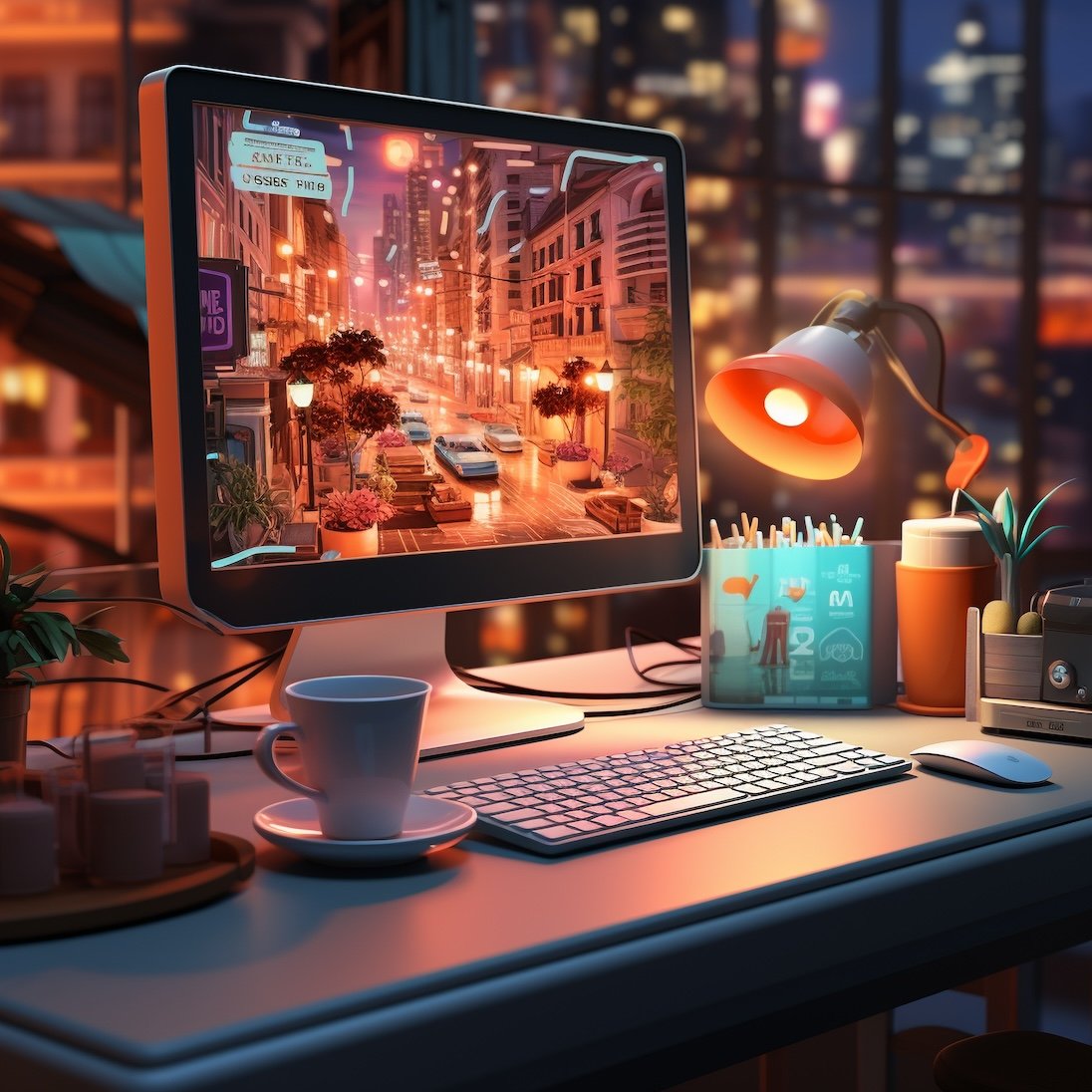Exploring the dynamic landscape of web design trends in South Africa unveils a captivating journey through innovation and creativity. As the digital realm, including the web design scene and sustainable web design, continues to evolve, staying abreast of the latest trends in the online landscape is paramount for businesses and individuals alike. From bold colors and minimalist layouts to immersive multimedia experiences, web design trends in South Africa reflect a fusion of global influences and local flavors. Understanding these trends not only enhances the visual appeal of websites but also elevates user experience and engagement. Join us as we delve into the fascinating world of web design trends shaping the online presence of brands in South Africa.
Key Takeaways
- Simplify and Stay Authentic: Focus on simplicity and authenticity in your web design to create a memorable user experience.
- Incorporate AI: Integrate AI elements into your web design to enhance user interactions and streamline processes.
- Prioritize User Experience: Enhance user experience by incorporating popular design elements and innovative techniques tailored to your target audience.
- Optimize for SEO: Implement SEO-centric web design strategies to improve visibility and reach on search engines.
- Experiment with Typography and Visuals: Explore innovative typography and visual design techniques to make your website stand out.
- Harmonize Design Concepts: Strike a balance between different design elements to create a cohesive and visually appealing website that resonates with your audience.
2024 Web Design Trends Overview

Responsive Design
Implement fluid grids and flexible images for optimal viewing on various devices to follow several web design trends. Prioritize user experience by ensuring seamless navigation and readability. Utilize media queries to adapt the layout based on screen size.
Voice UI Integration
Incorporate voice commands for hands-free browsing and interaction. Optimize content for voice search to enhance accessibility and user engagement. Integrate natural language processing for intuitive user interactions.
Dynamic Typography
Experiment with variable fonts and font pairing to create visual hierarchy. Utilize typography animations to draw attention to key messages. Implement responsive typography for optimal legibility across different screen sizes.
Emphasizing Simplicity and Authenticity
Minimalist Aesthetics
To create a visually appealing website, embrace white space strategically by using it. White space helps highlight crucial elements on the page and enhances readability for users. By focusing on simplicity and clarity in design, you can direct the user’s attention effectively. Utilize a limited color palette to maintain a cohesive look and clean lines for a sleek and modern aesthetic.
- Pros:
- Improved readability
- Enhanced user focus
- Cons:
- Risk of appearing too plain if not balanced properly
Designing with minimalist aesthetics not only makes the website visually appealing but also ensures that users can navigate the site effortlessly. By incorporating these elements, you can create a modern and sophisticated online presence that resonates with visitors.
Authentic Content
When it comes to content creation, prioritize authenticity to establish a genuine connection with your audience. Craft original and engaging content that reflects your brand’s values and speaks directly to your target demographic. By weaving storytelling into your content strategy, you can evoke emotions and create a memorable experience for users.
- Key Information:
- Building trust and credibility
- Establishing a strong brand identity
User-generated content plays a vital role in fostering community engagement. By encouraging users to share their experiences or opinions, you can create a sense of belonging and inclusivity within your online community. This approach not only strengthens relationships with customers but also enhances brand loyalty over time.
AI in Web Design
AI-Personalized Content
AI algorithms deliver personalized content recommendations based on user behavior and preferences. Dynamic content enhances user experience. Implementing tailored content suggestions improves engagement and boosts product recommendations.
Enhanced Functionality
Optimize website performance by minimizing loading times and enhancing responsiveness for better user experience. Interactive features like chatbots and calculators boost user engagement and interaction on websites. Seamless integration of third-party tools and plugins ensures enhanced functionality for web pages.
Popular Design Elements
Organic Shapes
Integrate organic shapes into your web design to create a more natural and visually appealing look. Curved lines and irregular shapes can add a touch of creativity and fluidity to your website. By experimenting with overlapping elements and soft edges, you can achieve a unique and engaging design that stands out.
Dark Mode Adoption
Implement dark mode on your website to improve user experience in low-light conditions and reduce eye strain. By using contrasting colors effectively, you can enhance visual appeal and draw attention to key elements on the page. Offering users the option to switch between light and dark modes allows for a personalized browsing experience tailored to individual preferences.
Vibrant Colors
Incorporate vibrant colors into your web design to evoke emotions and create a visually stimulating experience for users. Experimenting with color gradients and bold hues can make your design stand out and capture attention. It is essential to maintain color consistency with your brand identity while exploring creative color combinations to keep the design fresh and appealing.
User Experience Enhancements
Interactive Elements
Incorporate interactive elements on websites to captivate viewers and enhance engagement. Utilize hover effects to provide users with interactive feedback as they navigate the site. Implement animations to create a dynamic and visually appealing browsing experience.
Create scroll-triggered animations that guide users through the content, ensuring they stay engaged and interested in exploring further. Use interactive forms and quizzes to encourage user participation and gather valuable feedback for website improvement.
Streamlined Navigation
Simplify navigation menus to help users find information quickly and effortlessly. Ensure intuitive user pathways by organizing content logically and providing clear directions. Implement sticky navigation bars that remain visible as users scroll, offering easy access to key sections of the website.
Optimize mobile navigation by adopting responsive design techniques, making sure that the website is easy to navigate on smaller screens. By streamlining navigation, websites can deliver a seamless browsing experience for all customers.
SEO-Centric Web Design
Content Strategies
Develop a content calendar to plan and schedule engaging posts, ensuring a consistent flow of relevant content. This approach helps maintain audience interest and drives traffic to the website.
Implement SEO strategies to optimize content by using relevant keywords, meta descriptions, and headings. By doing so, websites can rank higher in search engine results, increasing visibility and attracting more visitors.
Utilize multimedia content like videos and infographics to enhance user engagement. Visual elements not only make the content more appealing but also help convey information more effectively, keeping users on the site longer.
UX, UI, SEO Integration
Align user experience, user interface, and SEO strategies to create a seamless web design approach. A user-friendly interface combined with optimized content can significantly improve website performance and user satisfaction.
Optimize website structure and layout for improved usability and search engine rankings. By organizing content logically and making it easy to navigate, websites can provide a better user experience while also boosting their SEO efforts.
Implement schema markup and meta tags to enhance SEO performance and visibility. These elements provide search engines with additional information about the website’s content, helping them understand and index the site more effectively.
Innovative Design Techniques
Claymorphism
Embrace claymorphism to create a tactile and realistic design aesthetic. Utilize soft shadows and highlights to mimic physical objects in a digital environment. Experiment with 3D elements and textures to add depth and visual interest.
Parallax Effects
Implement parallax effects to create a dynamic and immersive user experience. Use layered backgrounds to create a sense of depth and movement. Optimize parallax effects for performance and compatibility across devices.
Typography and Visuals
Innovative Typography
Experiment with unconventional fonts to create a unique visual identity for your website. By using different typography styles, you can stand out from the competition. Utilize typography not just for text but as a design element to convey specific moods and tones effectively.
Implementing responsive typography is crucial in today’s digital landscape. This ensures that your text adapts seamlessly to various screen sizes, providing a consistent reading experience across all devices. Whether it’s a desktop, tablet, or smartphone, responsive typography guarantees that your content remains engaging and easy to read.
Hero Image Focus
When it comes to web design trends in South Africa, placing emphasis on high-quality hero images is paramount. These images serve as the first visual impression of your website, capturing visitors’ attention instantly. Opt for visually striking hero images that not only look good but also convey your brand’s identity effectively.
To enhance user experience, optimize your hero images for fast loading times. Slow-loading images can deter users and increase bounce rates. By ensuring quick loading speeds, you provide a seamless browsing experience that keeps visitors engaged. Consider incorporating call-to-action buttons or overlays on hero images to prompt users to take specific actions.
Balancing Design Concepts
Minimalism vs Maximalism
Minimalism and maximalism are two contrasting design approaches that play a crucial role in web design trends in South Africa. Embrace minimalism for its simplicity and elegance, focusing on essential elements to create a clean and sophisticated look. On the other hand, maximalism offers a bold and expressive design style, incorporating vibrant colors, intricate patterns, and rich textures.
In the realm of web design, minimalism emphasizes clarity, readability, and functionality. By utilizing ample whitespace, designers can enhance user experience by reducing visual clutter and directing attention to key elements. This approach is ideal for brands seeking a modern and sleek aesthetic, where less is more.
Conversely, maximalism thrives on complexity, creativity, and visual impact. Designers opt for this style to infuse energy and personality into a website, making a strong statement through vivid colors, intricate details, and layered elements. Maximalist designs often evoke a sense of luxury, creativity, and abundance, appealing to brands looking to stand out in a competitive digital landscape.
When striking a balance between these two design concepts, experimentation is key. Designers can blend minimalistic principles with maximalist elements to create a unique and captivating visual language that resonates with the brand’s identity. By carefully selecting typography, color schemes, imagery, and layout structures, designers can craft a harmonious fusion of simplicity and complexity that captures users’ attention while conveying the brand’s message effectively.
Finding the Right Balance
- Pros of Minimalism:
- Enhanced readability
- Clean and professional aesthetics
- Faster loading times
- Cons of Maximalism:
- Risk of overwhelming users
- Slower loading speeds
- Potential distraction from key content
- Examples:
- Websites like Apple (minimalist) vs. Gucci (maximalist)
- E-commerce platforms vs. creative agencies
Final Remarks
You’ve explored the latest web design trends for 2024, focusing on simplicity, authenticity, AI integration, popular design elements, user experience enhancements, SEO strategies, innovative techniques, typography, and visual elements. Balancing these concepts is crucial for creating visually appealing and functional websites that resonate with your audience. By staying updated on these trends and incorporating them into your web design projects, you can elevate your online presence and drive better engagement.
Don’t miss out on the opportunity to enhance your website with these cutting-edge design trends. Start implementing these insights into your projects today to create a more impactful and user-friendly online experience for your visitors.
Frequently Asked Questions
What are the key web design trends in South Africa for 2024?
In 2024, key web design trends in South Africa include emphasizing simplicity and authenticity, integrating AI in design processes, focusing on user experience enhancements, adopting SEO-centric strategies, utilizing innovative design techniques, and balancing design concepts effectively.
How can AI enhance web design practices?
AI can enhance web design by automating repetitive tasks, personalizing user experiences, analyzing data for insights, improving website performance, and optimizing content delivery. By leveraging AI tools, designers can create more efficient, user-friendly, and visually appealing websites.
Why is user experience important in web design?
User experience is crucial in web design as it directly impacts visitor engagement, retention rates, and conversions. By prioritizing user experience enhancements such as intuitive navigation, fast loading times, mobile responsiveness, and clear calls-to-action, websites can provide a seamless and satisfying browsing experience for users.
What role does typography play in effective web design?
Typography plays a significant role in effective web design by enhancing readability, conveying brand personality, establishing visual hierarchy, and improving overall aesthetics. Choosing appropriate fonts, sizes, spacing, and colors can elevate the website’s visual appeal and ensure a consistent brand identity across all platforms.
How can web designers balance various design concepts effectively?
Web designers can balance various design concepts effectively by understanding the target audience’s preferences, aligning design choices with brand objectives, prioritizing usability and functionality, conducting A/B testing for optimization, staying updated on industry trends, and seeking feedback from stakeholders throughout the design process.



